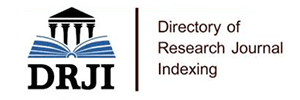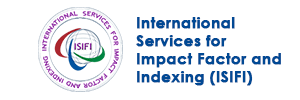
Journal Basic Info
**Impact Factor calculated based on Google Scholar Citations. Please contact us for any more details.Major Scope
- Adjuvant Therapy
- Head and Neck Oncology
- Prostate Cancer
- General Oncology
- Hormone Therapy
- Endometrial Cancer
- Kidney Cancer
- Endoscopy Methods
Abstract
Citation: Clin Oncol. 2020;5(1):1721.DOI: 10.25107/2474-1663.1721
A Genetic Predictive Model for Precision Treatment of Diffuse Large B-Cell Lymphoma with Early Progression
Jialin Ma, Zheng Yan, Jiuyang Zhang, Wenping Zhou, Zhihua Yao, Haiying Wang, Junfeng Chu, Shuna Yao, Shuang Zhao, Peipei Zhang, Yuanlin Xu, Qingxin Xia, Jie Ma, Bing Wei, Shujun Yang, Kangdong Liu, Yongjun Guo and Yanyan Liu
Department of Internal Medicine, Affiliated Cancer Hospital of Zhengzhou University & Henan Cancer Hospital, China Department of Molecule and Pathology, Affiliated Cancer Hospital of Zhengzhou University & Henan Cancer Hospital, China China-US (Henan) Hormel Cancer Institute, China # These authors contributed equally to this work
*Correspondance to: Yanyan Liu
PDF Full Text Research Article | Open Access
Abstract:
Early progression after standard immunochemotherapy leads to a very dismal outcome and necessitates alternative treatment for patients with Diffuse Large B-Cell Lymphoma (DLBCL). This study aimed to develop a genetic predictive model for early progression and evaluate its potential in advancing alternative treatment. Thirty-two hotspot driver genes were examined in 145 DLBCL patients and 5DLBCL cell lines using next-generation sequencing. By analyzing the association of clinical features, cell-of-origin, double expression, positive p53 protein, and gene alterations with early progression, a powerful genetic predictive model incorporating lactate dehydrogenase levels, CD79B mutations, and PIM1 mutations was developed which was validated in the other cohort. The potential of novel treatment based on the modeling was investigated in in vitro DLBCL cell lines and in vivo xenograft mouse models. CD79B and PIM1 mutations were significantly associated with double expression and indicated a better response to inhibitors of BTK (ibrutinib) and pan-PIM kinase (AZD 1208) through repressing activated oncogenic signaling. Since the two inhibitors failed to decrease BCL2 level, BCL2 inhibitor (venetoclax) was added and demonstrated to enhance their apoptosis-inducing activity in mutant cells with double expression. The genetic predictive model provides a robust tool to identify early progression and determine alternative treatment.
Keywords:
Diffuse large B-cell lymphoma; Early progression; CD79B; PIM1
Cite the Article:
Ma J, Yan Z, Zhang J, Zhou W, Yao Z, Wang H, et al. A Genetic Predictive Model for Precision Treatment of Diffuse Large B-Cell Lymphoma with Early Progression. Clin Oncol. 2020; 5: 1721.













